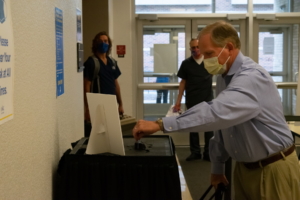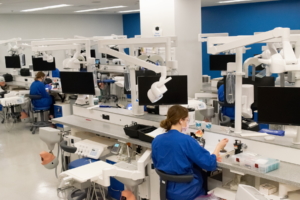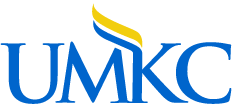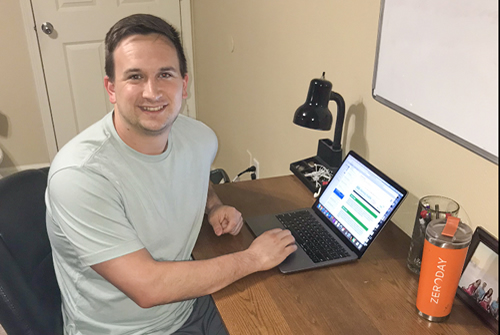In face of pandemic, school retools to continue its mission
“Adversity does not build character; it reveals it.”
—James Lane Allen, American novelist
In mid-March, the coronavirus pandemic ended business as usual at the School of Dentistry, closing classrooms and clinics.
But the school never faltered in its educational mission – or its commitment to May graduation for the class of 2020. And as May turned into June, and after more than two months of revamping curriculum and processes, and adjusting facilities, the school began its slow, phased reopening of dental clinics and the safe return of students.
“It has been a lot of hard work by a lot of great people,” said Dean Marsha A. Pyle. “Conditions changed daily, and continue to evolve, so we don’t know what the future will bring. But I’m so proud of how everyone has kept working and learning to complete classes and to rethink and update how we meet our missions.”
Taking it from the top
With the school and clinics closed, and students and faculty shifted to online learning, the dean and her team met daily to plan for reopening. And Dr. Connie White, a key member of the team, assembled a group to help get the work done, including experts in infection control and emergency medicine.
“Reopening clinics with more than 300 students and staff is a whole other matter. Our clinics served 65,000 patients last year.”
Dr. Connie White
It was a big task to figure out how much clinical training could be replaced with online exercises, and how much would have to be made up when the school reopened.
“I tell students interested in dentistry that it’s like driving. You can’t learn to parallel park by reading the driver’s manual,” said White, who is an associate professor, interim associate dean for clinical programs, and assistant dean for community relations and communication. “We have been able to simulate many lessons online, through case studies of patients with different conditions. But much of dentistry and dental hygiene must be learned by doing.”
 So, right after Memorial Day, some students began returning to complete spring semester work, including about one-third of the graduating dental class, White said. They will work to finish patient treatments that had to be suspended, such as fitting dentures or installing permanent crowns. The school also started scheduling non-emergency patients who had to wait several weeks to have work completed. (Throughout the shutdown, three faculty dentists continued to see emergency patients.)
So, right after Memorial Day, some students began returning to complete spring semester work, including about one-third of the graduating dental class, White said. They will work to finish patient treatments that had to be suspended, such as fitting dentures or installing permanent crowns. The school also started scheduling non-emergency patients who had to wait several weeks to have work completed. (Throughout the shutdown, three faculty dentists continued to see emergency patients.)
“But reopening clinics with more than 300 students and staff is a whole other matter,” White said. “Our clinics served 65,000 patients last year.”
 The school has put many precautions in place. The pre-clinical lab has gone to three shifts to help spread out students and keep safe distances between them. Scheduling has changed to shorten wait times and reduce patient loads in the waiting area, where easily disinfected and well-spaced plastic chairs have replaced cloth-covered ones. Patients will be called the night before an appointment to make sure they are well, and they will be screened on arrival, including a temperature check.
The school has put many precautions in place. The pre-clinical lab has gone to three shifts to help spread out students and keep safe distances between them. Scheduling has changed to shorten wait times and reduce patient loads in the waiting area, where easily disinfected and well-spaced plastic chairs have replaced cloth-covered ones. Patients will be called the night before an appointment to make sure they are well, and they will be screened on arrival, including a temperature check.
In the clinic, 30 aerosol suctioning units are being added to quickly remove water droplets generated during dental or hygiene work. A bipolar ionization filtration system, which kills viruses, has been added to the heating and air-conditioning system. And the school, which donated its PPE — personal protective equipment — at the outset of the shutdown to area hospitals, is replenishing its supplies of N95 masks, face shields and other gear as fast as it can.
“All the dental schools are facing the same challenges,” White said. “We ordered replacement PPE as soon as we donated ours. It’s a waiting game.”
And as students and patients return, everyone in the building is wearing face coverings. Patients use one entrance; faculty, staff and students use another, with their swipe cards recorded to aid contact tracing should it be found later that someone in the building tested positive for the coronavirus.
The school has been aided in reopening by safety guidelines from the Centers for Disease Control, the Occupational Safety and Health Administration, the American Dental Association and the Academy of General Dentistry.
As Dean Pyle said, “We are reopening carefully, with safety as our focus.”
Students focus on learning – and graduating
No one looks forward to a root canal. But learning how to perform one? That’s pretty exciting, said Kevin Mattingly, a second-year dental student who was in the midst of midterms and working on root canal procedures in his endodontics class when the school had to shift gears.
“To know I’m in the process of refining a skill that can impact someone so much is truly exciting and makes us students ready to get back to work now that the school is reopening,” he said.
According to Mattingly, the school’s administrators, professors and student representatives of his class have done a good job of communicating, especially when conditions were changing rapidly.
“Our professors really adjusted well. I am sure some of them never imagined in a million years they would have to teach a dentistry class completely online, but they were able to answer all our questions through Zoom. I think we learned as much as we could given the circumstances and maybe even as much as we would have in person.”
Mattingly also had a secret weapon.
 “The hardest part for me was to stay organized with our schedule, when plans were always changing,” he said. “Luckily, I was stuck in quarantine with my twin sister, who is also in my dental class. She made sure I was on top of things, and sometimes I made sure she was on top of things. I think a lot of us had another student or multiple other students that we stayed in close contact with, whether it be through Zoom or messaging or whatever, to make sure no one was left behind.”
“The hardest part for me was to stay organized with our schedule, when plans were always changing,” he said. “Luckily, I was stuck in quarantine with my twin sister, who is also in my dental class. She made sure I was on top of things, and sometimes I made sure she was on top of things. I think a lot of us had another student or multiple other students that we stayed in close contact with, whether it be through Zoom or messaging or whatever, to make sure no one was left behind.”
Classmates also helped dental hygiene student Abbey Hartley keep going and graduate on time with the rest of her class of 2020.
Hartley was busy screening potential patients for hands-on board certification exams when they were canceled in mid-March, raising anxiety at the same time she and her classmates no longer could be together. The students had no choice, though, but to support one another and move forward.
“Being with the same 28 young women every day for two years builds great relationships. We kept in touch and made sure we were all hanging in there.”
Abbey Hartley, president, DH Class of 2020
“Being with the same 28 young women every day for two years builds great relationships. We kept in touch and made sure we were all hanging in there,” said Hartley.
As for certification, the clinical exams have been reset for late June. And there won’t be live patients this year, as a coronavirus precaution. Hartley was encouraged when professors emphasized that dental and dental hygiene students had already performed the tests’ procedures on patients in clinic many times during their years at the dental school. She said her classmates were ready to pass any test and join the workforce.
“I know we will all make amazing dental hygienists,” she said. “I am staying positive because I know I have had a great education at UMKC.”
Making things even safer
Just as everyone at the school has been working to keep students on track, alumni have been busy preparing for a return to more normal practice levels. For Matt Niewald, DDS ’01, that has meant upgrading safety equipment and procedures, along with remodeling his Lakewood Dental Center in Lee’s Summit, Missouri.
“We’ve done a lot of training on using masks and other personal protective equipment,” said Niewald, a solo practitioner whose staff of a half-dozen includes hygienists, dental assistants and front-office staff. “We’ve also repainted and remodeled, and the staff has been fully involved in everything.”
Niewald’s staff was on unemployment only briefly, thanks to his loan through the federal Paycheck Protection Program. “It’s been a lifesaver,” he said. “I really didn’t have a choice but to apply for the aid, and it was great to be able to get everyone back in the office.”
“We’ve done a lot of training on using masks and other personal protective equipment.”
Dr. Matt Niewald
Besides perfecting their skills with a paint roller, Niewald said, his staff members helped figure out how to efficiently screen patients in the parking lot — with a thermometer and a quick questionnaire — and then get them to their dental chair, avoiding stops in the waiting room or spending long times in their cars. He also is using high-speed air evacuation systems, and disinfectant fogging between patients. Because his practice is small, his operatories are in separate rooms with doors, which helps with infection control.
As Niewald and his colleagues have stayed connected throughout the shutdown to support each other and share ideas, one conversation stands out. Talking with a former faculty member and mentor who is in private practice now, they recalled how the school was always strong on the importance of infection control.
“Now,” says Niewald, “all of our improvements are just building on that.”



